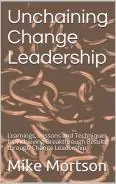
Excellence, or superiority, is often the goal in corporate organizations. Each and every function, within its own right, including Procurement teams, strives for excellence and achievement in order for a company to collectively grow, evolve, and thrive.
Achieving excellence seldom comes easy. Hardships and roadblocks are to be expected taking the road less traveled towards change and transformation, but without daring to create something contemporary, one often settles for commonality.
There is no one answer to success and achievement, but there are parallels that can be drawn between organizations that simply exist, and those that prosper.
Procurement is a function that has long been at cross-roads; dare to transform within people, process & technology, or keep doing what has always worked just fine.
In a discipline where marginal gains within cost & profit are considered big wins, it’s not odd that procurement teams aren’t thrusting themselves into transformational initiatives. Procurement practitioners are hard-wired to avoid risk and secure profit/cost gains.
But, the dowdy perception of the procurement function has created a narrative adopted by the broader value chain that must be cleared up in order for procurement to evolve and excel.
A fatal misconception
Procurement’s devaluation in the broader value chain could date back to 1985, and the Value Chain modeling of Michael Porter.
Porter’s Value Chain and modeling of the value chain became the widely-accepted model for strategically aligning an organization, cross-functionally, in order to deliver a valuable product or service to the market.
Porter determined the modeling above for the visualized value chain and broke down functions within an organization into two categories; primary and secondary activities:

Functions like Sales, Marketing, Operations & Services are deemed primary activities, whilst areas such as technology, HR & procurement are considered secondary.
Procurement, in the context of Porter’s modeling, has a very narrow definition as a function: ‘Responsible for the acquisition of inputs, or resources, for the firm.’ So, this model identifies procurement as a role rather one-sided in its functionality; responsible for acquiring materials, commodities, or products. This model rather blatantly ignores procurement as a key value-adder, but rather a single-role filler.
In reality, procurement excellence enables the safeguard of brand value, mitigation of risk, sustainable development, and top-line value addition.
While Porter’s value chain model is over 35 years old, and this traditional perception of procurement is becoming increasingly outdated, the sentiment of procurement as a secondary function has etched itself into business history.
To ensure your procurement team doesn’t fall victim to this common misconception, you must be prepared to be outspoken and live the change you want to see.
After many conversations…
In our work at Kodiak Rating, we have the unique opportunity to speak to and collaborate with hundreds of procurement teams and thousands of procurement practitioners every year; often from large, multinational, and global organizations.
As a technology provider, we speak second and listen first.
Understanding the needs and challenges of a potential/existing customer is the primary objective of any solution provider. In parallel to hearing about the challenges procurement practitioners face, our team also hears about the successes and triumphs of global procurement teams.
These are the 7 common signs we’ve identified for teams that achieve procurement excellence:
1. Budget
Procurement professionals surveyed in the 2019 CPO Rising study responded that limited budgets and lack of modern procurement technologies were the top seen as the top 2 hurdles for achieving procurement objectives between 2020–2022 (CPO Rising 2019).

Lack of support from senior leadership, and failure to secure budget is no winning formula for procurement excellence.
To achieve procurement excellence, CAPEX & OPEX investments are required in people, process, and technology to drive development projects and experimental/exploratory initiatives.
If your C-Suite doesn’t recognize this, it’s time to start forming an investment business case to secure procurement’s fair share of the budget.
2. Leadership
Leadership is vital within any Procurement team.
As procurement reaches for excellence, evolution is required. This makes the leaders of change a centerpiece in the organization within isolated teams, but also at the top.
Inspiring a culture where employees feel empowered to deliver on goals and priorities is increasingly important as we continue to work remotely during 2021.
Having a CPO or Procurement VP/Director that is able to make an organizational buzz, inspire excellence and adopt change is necessary to evolve within a traditionally square function.
CPOs in excellent procurement teams exhibit 3 recurring qualities:
1) Technologically Interested:
The future of the CPO function contains procurement officers that have a stronghold on the technology at their disposal.
Take the CPO of IBM, Bob Murphy, as an example. He says that in order to complete his role successfully as a CPO, evolving within an ever-changing ecosystem is crucial. “I’m out there looking for ways to keep improving and keep adding value. I spend 25% of my time there speaking with other CPOs, leaders from industry and technology companies, so I can find out how they’re thinking around these challenges and how they’re motivating their teams,” claimed Murphy (Procurement Leaders 2017).
2) People First:
87% of CPOs polled in Deloitte’s CPO Survey 2017 agreed that talent is the single greatest factor in driving procurement performance (Deloitte 2017).
Deloitte’s 2020 Global Human Capital Trends Survey12 found that 80% of organizations identified worker well-being as “important” or “very important” for their success over the next 12 to 18 months (Deloitte 2020).
Procurement leaders of excelling procurement organizations lead with an eye on up-and-coming talent acquisition, and a heavy dose of humanity.
3) Master Communicators
CPOs have a responsibility to disseminate information and communicate the importance of their wants and needs with other management members throughout the value chain.
“No longer will people be able to hide behind the process they employ. We need people who can translate complex business needs, be a critical friend to the business, be magnetic, charismatic, and engaging — words you wouldn’t necessarily expect of procurement teams.” (Raconteur 2017).
3. Experimentation
How does the saying go…?
“The definition of insanity is doing the same thing over and over, and expecting different results”
Procurement teams that are achieving excellence don’t get stuck in the rut of ‘things are working just fine’. Teams that excel live by the 80/20 rule, and aren’t afraid of experimentation.
80% of your time is business as usual, and 20% of your team’s time should be earmarked for investigation, experimentation, and — most importantly — trial and error.
This means piloting new technology, expanding spending on R&D, driving supplier-led innovation projects, and more!
If you never experiment, you’ll never fail, and if you never fail, you’ll never learn. Rome wasn’t built in a day, and it’s important to remember that transformation is iterative. Embrace experimentation if you plan on excelling.
4. Diversity
Procurement has generally and historically lacked diversity in a global context, within teams and supplier networks.

A predominantly white, male, industry; executive procurement, sourcing & supply chain management roles simply lack diversity. This is far from a positive attribute and has — in some cases — created a direct correlation for lacking supplier diversity. Executive diversity in procurement, sourcing & supply chain is on the agenda in many global organizations as it has been a spotlight topic for the past 5–10 years.
This same shift needs to be mirrored at scale, by reviewing the diversity of existing supplier bases & enrolling initiatives to improve upon supplier diversity. Diversity should be one of the pillars of your CSR strategy & activities.
Procurement teams that we deem to be excellent have a strong focus on implementing diversity initiatives in order to create shared value and economic impact at scale. These are teams that don’t turn a blind eye, but rather take a hard look in the mirror.
As stated, in one of my favorite quotes put bluntly, by Kevin Shriver of Land O’ Lakes,
“ If more than 50% of the population is women and less than 20% of the people in senior supply chain positions are women, then by default, we cannot be hiring the most talented people” (kinaxis.com).
Diversity starts with initiatives for change, but the follow-through and systematic governance of diversity are what separates procurement teams that are ‘good’ from those that are the ‘great’.
5. Segmentation & Consolidation
A majority of global procurement organizations have a dirty little secret… they have too many suppliers.
To many procurement practitioners reading this article, this is no shocker, but simply another day at the office.
Centralized supplier, contract & spend control is difficult in any organization. But, as the complexity of a global supply network grows, so do the challenges associated with a growing supplier base; such as decreasing supply visibility, and increased supply chain risk.
Interestingly enough (as seen in the figure below), 47% percent of respondents in the 2020 Deloitte CPO Flash Survey said they are planning to expand their overall supply base, while 25% of respondents plan to consolidate. 28% responded that they aren’t planning any change (Deloitte 2020).

COVID19’s impact during 2020 pointed out the lack of supply chain resilience & alternative supply networks, and therefore many professionals aim to expand their supply network during 2021.
Whether you plan to consolidate or expand, classification and segmentation of the supplier base is a necessary activity in order to know who you buy from, and why you buy from them. Top-performing procurement teams often have strong category expertise and have well-classified supplier bases in order to power procurement agility.
Without proper segmentation, agile procurement is an oxymoron.
6. Procurement with a purpose
Procurement is one of the sole functions in an organization that can truly implement, and realize, quality and sustainability initiatives in the line; considering procurement’s ability to impact the global supply chain network at the supplier level.
Sustainable development can take on a ripple effect when procurement leads with responsible sourcing and purchasing initiatives.
“Environmental, Social and Corporate Governance (ESG) frameworks have gone beyond a simple tick-box exercise.
The step-change that businesses must undertake to meet these sustainability demands in all aspects of their operations — including the supply chain — is now all about building purpose-led ecosystems to deliver on sustainability goals and Davos commitments.
This means that organisations need to move beyond simply monitoring supplier compliance, to actively collaborating with suppliers on initiatives to improve environmental, social, and economic performance. They need to move towards a purpose-led procurement approach; we will see that accelerate in 2021.” (Supply Chain Digital 2020).
This is an approach that has long been adopted by global organizations such as Nestle, Unilever and others, and will continue to be a trait exhibited by excellent procurement teams of the future.
7. Transformation Hubs
Excellence doesn’t birth itself.
Just like any change, it is best led by a central function & team that steers the change based upon a core organizational need, within the framework of a change management process.
In teams that are reaching for that next level of procurement excellence, there is often a formation of dedicated project leads and generalists who are talented, inspiring, and experienced enough to implement transformative initiatives. These individuals often have the title of transformation, process or development manager.
Transformation & program managers are master coordinators between top management, line managers, and project managers. They’re jugglers of expectations, aligners of needs, and often rather well-rounded in their categorical competency.
If your procurement team doesn’t currently have the means, or resources, to engage in the organization/delegation of a transformation hub, then it may be something to add to your 2022 strategy.
Because doing the same thing over and over and expecting different results is simply insane…
Ready to become excellent?

